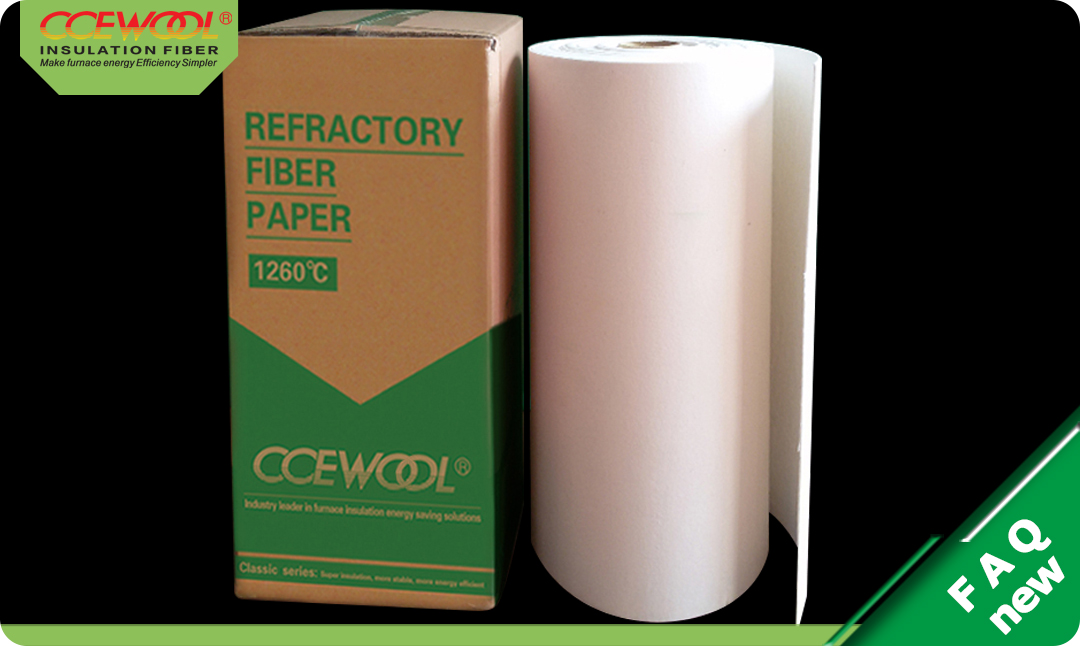In the field of high-temperature insulation, people often think first of rigid materials such as refractory bricks or ceramic fiber boards. However, in many industrial systems, true stability often comes not from rigidity, but from flexibility — from materials that can bend, wrap, and seal under heat and stress. CCEWOOL® Refractory Ceramic Fiber Paper is developed with this concept in mind. Its exceptional flexibility makes insulation systems lighter, more adaptable, and more durable.
The essence of flexibility: adapting to, not resisting, thermal stress
In furnaces such as aluminum melting furnaces, heat-treating furnaces, and ceramic kilns, the structure repeatedly expands and contracts with temperature changes. Traditional rigid linings easily crack or spall during these cycles, causing heat leakage, higher energy loss, and frequent maintenance. CCEWOOL® Refractory Ceramic Fiber Paper, with its flexible structure, adapts to thermal stress instead of opposing it, maintaining perfect contact and sealing even at 1200 °C. It resists breaking or delamination when bent or wrapped, remaining stable even under vibration or mechanical impact.
Why is CCEWOOL® Refractory Ceramic Fiber Paper so flexible?
-
Ultrafine fiber structure: Made from high-purity alumina silicate fibers just a few microns in diameter, forming a three-dimensional network that provides natural elasticity and resilience.
-
Wet-forming technology: Advanced wet forming and nine-stage shot-removal ensure fibers are well dispersed and uniformly distributed. After drying, the paper can bend 180° without cracking or layering, outperforming conventional types.
-
Low organic content: Minimal binder ensures softness and easy cutting at room temperature, while burning out cleanly at high temperatures without affecting insulation or purity.
Smart process control ensures consistent flexibility:
CCEWOOL® integrates its self-developed《Fiber Micro-defect Detection System Based on Image Recognition Technology V1.0》to monitor fiber distribution and thickness in real time. The system automatically adjusts slurry concentration and forming speed, preventing hard spots and brittle areas. Combined with intelligent tension and temperature control during drying, paper thickness tolerance is kept within ±5%, ensuring every roll has consistent flexibility and stability.
Engineering value: flexibility improves every detail
-
Furnace doors and lids: Works as a flexible gasket for perfect sealing and reduced heat loss.
-
Casting molds and sintering layers: Serves as a smooth release layer to prevent sticking and cracking.
-
Pipe and equipment wrapping: Conforms easily to curved or irregular surfaces, ensuring continuous insulation.
-
Buffer layer for rigid linings: Absorbs stress and prevents thermal cracks between boards or modules.
In all these applications, flexibility means easier installation, less maintenance, and longer service life.
CCEWOOL® Refractory Ceramic Fiber Paper adapts dynamically to high-temperature systems, making insulation layers more stable and efficient. With its light weight, flexibility, and intelligent manufacturing, CCEWOOL® sets a new benchmark for modern high-temperature insulation solutions—proving that in today’s industry, flexibility is strength.
Post time: Nov-10-2025


